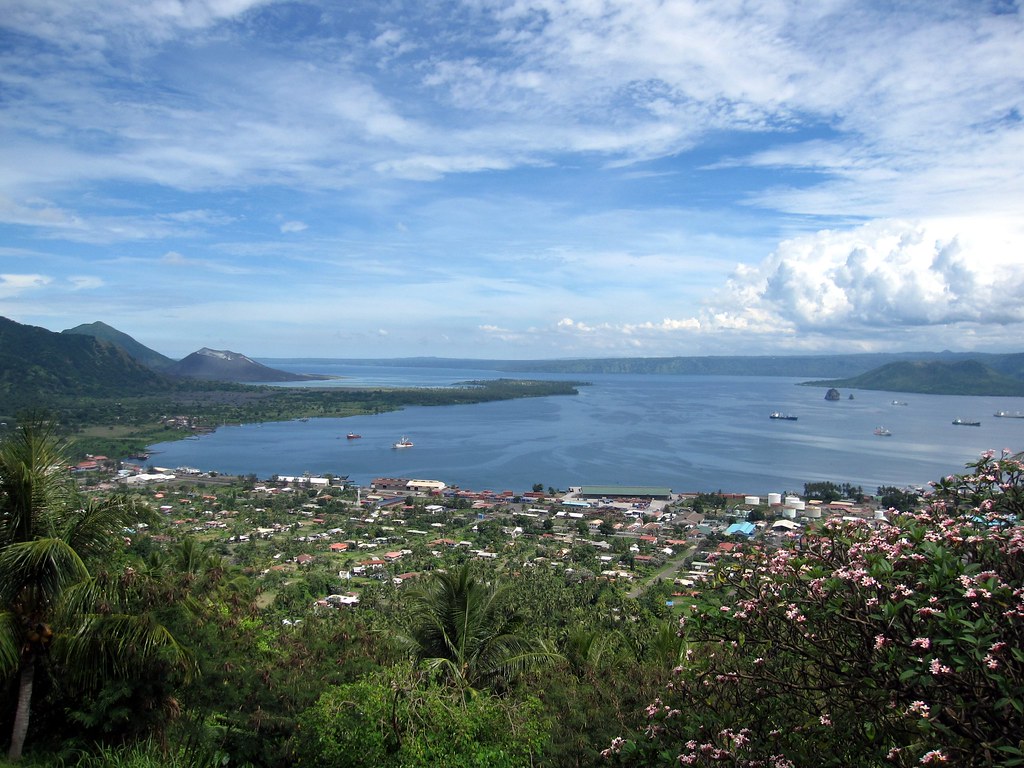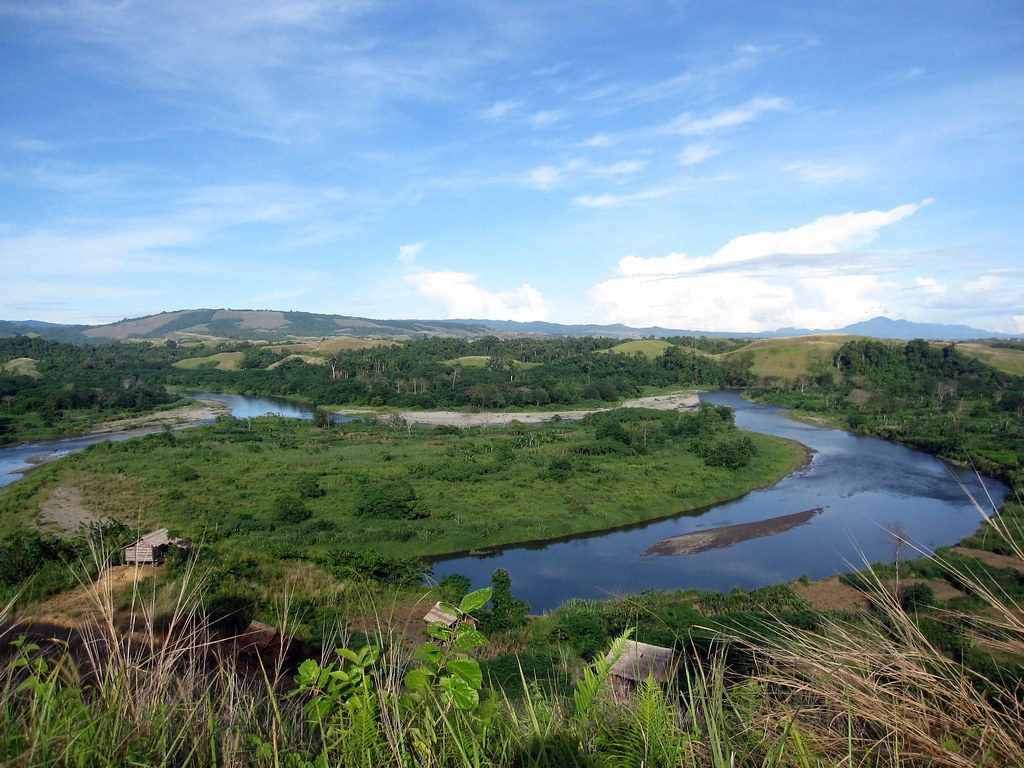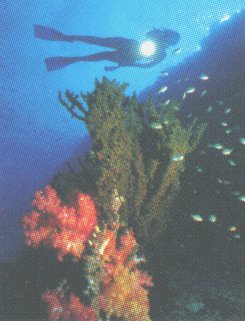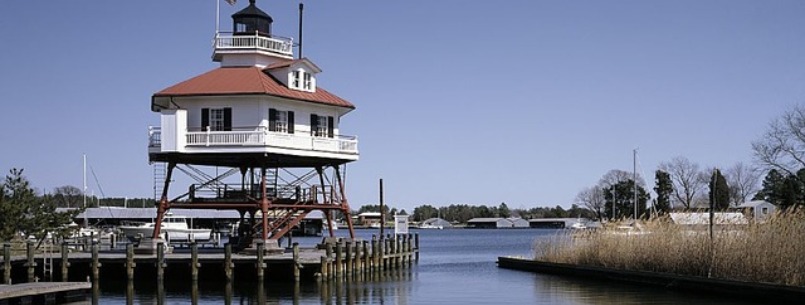2024 Solomon Islands Visitors Guide
The Solomon Islands, Treasured Islands of Melanesia and the Pacific, has something for everyone. Comprising literally thousands of large islands, small islands, and islets, it has a multiplicity of cultures and diversity of people that is forever fascinating. Indeed the Solomon islands are rich not only in the diversity of the customs, culture, rituals, and lifestyle of the people, they are also generously endowed with natural resources. These natural resources include not only the mineral resources that drew Alvaro de Mendana who named it the Solomon Islands so many years ago but also the natural resources of fresh air, crystal clear waters with an abundance of fish along with so many of the treasures that Nature has so generously endowed. The Solomon Islands Group was probably discovered about 5,000 years ago. The first Europeans to visit the Islands were the Spanish with Alvaro de Mendana naming them the Solomons. He also named the Islands of Santa Isabel, Guadalcanal and San Cristobal.

CAPITALS AND MAJOR CENTERS
The Solomon Islands are made up of more than 990 islands, which together cover a landmass of 28,000 square kilometers. The main islands are Choiseul, Guadalcanal, Santa Isabel, San Cristobal, Malaita, and New Georgia. Volcanoes with varying degrees of activity are situated on some of the larger islands, while many of the smaller islands are simply tiny atolls covered in sand and palm trees.
The Solomon Islands Group has an abundance of golden beaches fringed with palm trees, translucent blue waters, spectacular coral reefs, and colorful marine life. The Solomons are located southeast of Papua New Guinea and only three hours by air from Australia. The islands are covered in tropical rainforest and their steep hilly slopes are interspersed with swift-flowing creeks, waterfalls and peaceful lagoons. The people of the Solomons still practice a traditional way of life, preferring to respect the old customs and traditions, maintaining and preserving their beautiful unspoiled environment.
THE PEOPLE
The Islanders are smiling, warm friendly people, mostly Melanesians (90%), with some Polynesians, Gilbertese (I-Kiribati), Europeans and Asians. There is no segregation between races and English is the official language though there are more than 120 indigenous languages, including Pidgin English, spoken throughout the Island Group.
NATURE
Lush tropical rainforests cover most of the Island Group. Exotic orchids, many varieties of extra-large frangipanis, colorful bougainvilleas, ferns, and palms are found everywhere and butterflies are abundant. There are more than 70 species of reptiles. A variety of trees and shrubs had been introduced along with fruits and vegetables.
THE SIGHTS
In Honiara, there is a bustling Chinatown, the National Museum and Point Cruz Yacht Club. Western Province offers traditional villages, secluded beaches, superb snorkeling and scuba diving.
GETTING AROUND
There are Public Buses, Hired Cars and Taxis, and you can see a lot simply by walking. For inter-island travel, go by aircraft or boat. Solomon Airlines flies to about twenty-three destinations throughout the country while Western Pacific Air Services operates flights to the smaller, more isolated airfields in the Solomons.
FOOD AND ENTERTAINMENT
Major Hotels have restaurants and there are International style restaurants in Honiara. Hotels have beer gardens and bars and several private clubs welcome visitors. Island night barbecues are held regularly and are very popular.
ACTIVITIES
Sports activities include golf, tennis, bushwalking and a wide range of aquatic sports – swimming, sailing, windsurfing, water skiing, snorkeling and game fishing. The Solomons is renowned as a scuba diver’s paradise with coral, shipwrecks, giant clams, tropical fish and game fish.
SHOPPING GUIDE
High-quality craftwork is available and includes ebony and wood carvings, bowls with mother of pearl inlays, shell jewelry, baskets, bags, hats and mats woven with pandanus or coconut palms.
Although the only craft shops are in Honiara, you can buy work direct from craftsmen and women in the other islands. Daily markets are held throughout the Solomons. The Central Market in the capital of Honiara is the largest and most colorful.
HONIARA
Honiara, the Capital was born out of war’s necessities. It’s oldest architectural style, still to be observed in one or two less obvious corners of its bustling environs is the World War II military hut with its distinctive semi-circular roof. Honiara takes its name from the native description of its site: “Naho ni ara”, meaning “facing the east and south-east wind”, and not even a native village preceded it in its location.
 Honiara is centered on Point Cruz, which Alvaro de Mendana named when he landed there more than 4 centuries ago. He also named Guadalcanal, the island on which it is located for a town in Spain, and many of the other geographical features of the Group, which probably takes its own name from his reports of its riches. Situated on Guadalcanal, the capital Honiara has a population of more than 30,000 and is located on a coastal stretch overlooking Iron Bottom Sound. One of the most spectacular waterfalls in the South Pacific is Matanikau Falls, a two-hour walk from Honiara. It has many large pools for swimming and an impressive stalagmite-covered cave which is home to a vast number of swallows.
Honiara is centered on Point Cruz, which Alvaro de Mendana named when he landed there more than 4 centuries ago. He also named Guadalcanal, the island on which it is located for a town in Spain, and many of the other geographical features of the Group, which probably takes its own name from his reports of its riches. Situated on Guadalcanal, the capital Honiara has a population of more than 30,000 and is located on a coastal stretch overlooking Iron Bottom Sound. One of the most spectacular waterfalls in the South Pacific is Matanikau Falls, a two-hour walk from Honiara. It has many large pools for swimming and an impressive stalagmite-covered cave which is home to a vast number of swallows.
Visitors can also climb Mount Austin, passing Solomon Peace Memorial Park with its sweeping view of the Northern Coastal Plains. Other historical sites include the Red Beach on the Coastal Plain, and the Henderson Tower.
In an easterly direction from Tenaru is the Tenaru Falls an impressive 60-meter waterfall, and in a westerly direction from Honiara is Bonigi Beach, five kilometers west of Poha. At the eastern end of Guadalcanal is Marau Sound a coral paradise. Here there are huge reefs of coral in unique and beautiful shapes that are home to a teeming array of tropical fish and fascinating sea life. There are also giant clams and some of the world’s seashells. Savo Island is a cloud-shrouded place, its waters housing the graves of at least four ships that were sunk during the Battle of Savo. Today it is an ideal picnic spot and a diver’s paradise with its sunken ships, sleepy villages, and magnificent crystal waters.
THE WESTERN PROVINCE: GIZO
Gizo on the Island of Ghizo is the capital of Western Province which is well renowned for its diving and is the most popular area for visitors. Here you will find a peaceful tropical haven with islands and atolls to visit, along with traditional villages, secluded beaches, superb snorkeling and scuba diving. Gizo is a picturesque waterfront village at the head of the Vona Vona Lagoon. Gizo is the perfect jumping-off point from which to explore the tiny atolls of the western province. One of these is Plum Pudding Island where the late President John F Kennedy and his crew were shipwrecked during World War II.
Ghizo Island is not much more developed than it was during the war when thatched huts and small buildings crammed the shoreline. Fishing in the waters is something to be experienced.
The size and number of fish is an angler’s delight. Here tourists and divers are catered for with the cheap, comfortable accommodation, but the lack of luxury is offset by the proliferation of uninhabited island hideaways and tropical fauna.
Off Ghizo you can hire a private boat and explore some of the magnificent coral reefs and marine life, as well as many war wrecks. New Georgia Group of islands is another popular scuba diving center for exploring the waters of Marovo Lagoon (Uepi), one of the world’s largest and also Roviana Lagoon (Munda).
HOTELS
SOLOMON KITANO MENDANA HOTEL
Situated just fifteen minutes from Henderson Airport and two minutes from Honiara’s shopping center it is a premier location for business travelers because of its proximity to Honiara’s Government and business offices. The Hotel is the Solomon premier conference venue offering photocopy, telex, facsimile and secretarial services. Gracing the oceanfront, the Hotel has a choice of 94 guest rooms which include deluxe rooms with sea or garden views, three luxurious suites, and standard rooms or with airconditioning, IDD telephones, television with in-house video and satellite TV systems, fridge, tea and coffee making facilities plus international service to match from the staff.
From the Hotel, it is possible to arrange flights to more than 20 of the outer islands or to join the “off the beaten track” travelers and venture into the wild of the country, dive further afield to coral reefs and war wrecks, observe the diversity of Melanesian culture, fish and sightsee among the battlegrounds of the Pacific.
HONIARA HOTEL
Smiling faces and warm island hospitality are a distinctive trait of the Honiara Hotel which is located in tropical surroundings only a few minutes from the city centre. With the addition of a new wing perched on a hilltop, the hotel has increased its guest accommodation and set an even higher standard with rooms that feature large balconies overlooking Honiara and the historic Iron Bottom Sound.
All accommodation, except for the budget rooms, features air-conditioning, satellite TV, in-house video, radio, IDD telephones, private bathroom, fridge and tea and coffee making facilities. The budget accommodation offers fully-screened rooms with ceiling fans, washbasin and shared bathroom facilities. The hotel has an air-conditioned French a la carte restaurant, Poolside Coffee Shop Bar, souvenir shop, boutique and dive shop.
Outdoor activities center around the swimming pool, squash courts, and floodlit tennis court. The friendly receptionists can also help with inquiries about diving and local tours. Guests are treated royally with colorful dancers from the Solomon and Gilbert Islands performing a variety of traditional dances around the pool area every Wednesday (BBQ night) and Friday (Island Feast night). The hotel also specializes in conferences, banquets, cocktail parties and wedding reception.
KING SOLOMON HOTEL
The new King Solomon Hotel is impressive in appearance, but doesn’t compromise on comfort or service and provides a wonderful beginning to your adventure in the Solomon Islands. Every room is charming, every detail of the hotel unique – from the cable car transportation to the tropical landscaped gardens and waterfall. When you stay at King Solomon, not only do you get excellent service and facilities, but you also find Solomon Islands culture and tradition blending in with the comforts of a new hotel.
The two magnificent ‘Leaf Haus’ which lodge the reception area, gift and dive shop, bar and restaurant, are traditionally built, with high beams and thatched roofs. The friendly warmth and hospitality of the Solomon Islands are reflected in the hotel staff who are dedicated to making your vacation both enjoyable and memorable.
Set one block back from the waterfront, the hotel has 59 guest rooms and self-contained units commanding spectacular views of Iron Bottom Sound and the surrounding islands. The emphasis is on accommodation that is clean, comfortable, relaxing and designed to make life in the tropics a pleasure. All rooms are air-conditioned and feature satellite television, in-house video, refrigerators, IDD telephone, ceiling fans, and tea and coffee making facilities. Most rooms also have the convenience of a small verandah.
Dining and entertainment provide a Melanesian flavor to the hotel’s restaurant and Honiara’s only nightclub. The restaurant caters for all tastes and specializes in local fresh fish and seafood. The hotel’s brasserie will keep you going from breakfast into the evening.
The hotel also has a duty free, convenience and gift shop for those holiday essentials, as well as hire cars, laundry services, a dive and tour shop, airport transfers and conference facilities. The King Solomon Hotel, in its central tropical island setting, is the perfect gateway to the Solomon Islands.
INTERESTING ISLANDS
The islands which comprise the Solomons are practically innumerable. A thousand and one, it is said, make up the cluster called the Russell Group and at least as many more festoon the southeast shores of New Georgia, centering the whole complex of archipelagoes. The more practical estimate lists thirteen large islands nearly enclosing a central passage which, ever since the war has been called ‘The Slot’, and which runs southeast and northwest between the seventh and tenth degrees of south latitude.
At the top end are Bougainville and Buka. On the eastern side of ‘The Slot’ are Choisel, Santa Isabel and Malaita; on the western, San Cristobal, Guadalcanal, The Russells, New Georgia, Rendova, Kolombangara, Vella Lavella, The Treasuries and The Shortlands. In a Central position lies Florida, and to the South well away from the crowd, is Rennell.
Solomon Island Attractions
GUADALCANAL is the largest island in the Solomons with an area totaling 5,302 square km. Main sightseeing attractions include:
THE NATIONAL MUSEUM: Found opposite the Mendana Hotel, the National Museum houses the finest collection of custom and traditional artifacts, photographs and historical materials.
CULTURAL CENTRE: The different traditional architectural styles of the eight Solomon Islands Provinces are seen in the leaf houses built behind the museum in a parkland setting.
NATIONAL ARCHIVES: The most extensive collection of historic material in the country is collected and maintained at the archives next door to the museum and is open to the public.
NATIONAL ART GALLERY: The former Old Government House has now been newly converted to a National Art Gallery and Cultural Center.
Exhibitions of paintings and other displays have been made possible by the artists themselves and other interested people. Café facilities are also available on request.
PUBLIC LIBRARY: Situated on the main highway just behind the office of the Public Works Department.
BOTANICAL GARDENS: Found close to the Solomon Islands Broadcasting Corporation (SIBC) studios in front of the gate to the prison at Rove. Go through the prison gate and follow the road to the gardens.
MARKETS: A thriving and busy collection of market vendors selling vegetables, fruits, fish, betel nut and custom shell money and jewelry can be found Monday to Sunday at the main market near the wharf and at Rove and Kukum, a short distance from town. The Rove market opens on Sundays as well.
CHINATOWN: One of the first established trading centers in Honiara, this busy commercial center just across the Matanikau Bridge is still today a predominantly Chinese center of business activity. Chinatown’s main street is lined with stores built in the traditional ‘colonial’ style with verandahs and iron roofs.
FISHING VILLAGE: People originally from Lau in Malaita have established a fishing way of life on the main highway approximately five kilometers from town. Their fish market operates every day except Saturday.
OUT OF HONIARA
BEACHES: Honiara, set on the foreshore of Iron Bottom Sound, has many fine swimming and diving beaches as close to the city as Rove, or Rain and Tomb Holiday Beach Resort, a short ride to the west.
GOLF: Tee off under the lavish shade trees on Honiara’s seaside golf course. Enquire about fees.
ICLARM CLAM FARM: An experimental station for the study of the declining species of giant clams, known throughout the South Pacific Region and beyond.
BETIKAMA: Situated in the grounds of the Seventh Day Adventist School, this handicraft center has a fine display of pottery, copper work and wood carvings for viewing and sale, as well as a museum of war relics. This may be as close as you can get in Honiara to a live crocodile.
TENARU FALLS: Described as one of the finest waterfalls in the South Pacific, this is a day’s expedition involving travel by vehicle and walking on a track into the bush of Guadalcanal east of Honiara on Lengo and Malango mountains.
MATANIKAU FALLS: Take a vehicle to Tuvaruhu, a suburb of Honiara and ask for a guide at Lelei Village to find the waterfall on Galloping Horse Ridge.
VIHONA FALLS: Deep in the rainforest of Guadalcanal in the Lhamas mountain range, these splendid waterfalls are accessible only by helicopter.
MAVASERE CULTURAL CENTRE: An hour and a half drive east of Honiara takes you to the home village of the Moro movement, which seeks to enshrine the physical and spiritual values of traditional life.
KOMUVAULU VILLAGE: On the Guadalcanal weather coast, this village is the headquarters of the Moro movement. Accessible by boat or domestic plane to Marau or Avu Avu.
WORLD WAR 2 BATTLEFIELDS, RELICS, AND MEMORIALS abound on Guadalcanal.
DIVING: There is an amazing collection of WW2 wrecks within 15 minutes drive of Honiara Centre. Dives for the experienced or beginners can be arranged through a number of dive operators.
VILU VILLAGE WAR MUSEUM: For history buffs, Vilu has a good collection of World War 2 wreckage.
DIVE SOLOMON ISLANDS
If it weren’t for the remnants of war – tankers, battleships, troop carriers, bombers and fighters, which can be found scattered amongst the shallow reefs and deep harbors throughout this island nation, it would be hard to believe that the Solomons were once the site of fierce fighting during World War 2. While the reefs are as good as any in the world, most divers visit the Solomons to see the remnants of the Pacific campaign. Honiara on the island of Guadalcanal is the best place to start with some wrecks diveable from the shore.
 The ‘Hirokawa Maru’ and ‘Kinugawa Maru’ are both shore dives with the start of the wrecks lying on the sandy beach and ending in over 50 meters of water. Blooms of soft corals cover the hard shapes of shattered steel and jutting guns. Live ammunition is common in the holds which are screened off by sheets of tiny silverfish. Overhead, schools of Barracuda and Trevally blot the sun, while Garden Eels sway in the sleepy sloping sand bottom. Further north a short swim from the shore reveals a B17 bomber resting on the sand. Fish fill the interior and it is possible to sit in the gunner’s seat to try out the jutting guns.
The ‘Hirokawa Maru’ and ‘Kinugawa Maru’ are both shore dives with the start of the wrecks lying on the sandy beach and ending in over 50 meters of water. Blooms of soft corals cover the hard shapes of shattered steel and jutting guns. Live ammunition is common in the holds which are screened off by sheets of tiny silverfish. Overhead, schools of Barracuda and Trevally blot the sun, while Garden Eels sway in the sleepy sloping sand bottom. Further north a short swim from the shore reveals a B17 bomber resting on the sand. Fish fill the interior and it is possible to sit in the gunner’s seat to try out the jutting guns.
New Georgia island encompasses two resorts – Gizo Island and Munda Island. Both have wrecks such as Japanese freighters, transports, dive bombers, and American fighter planes. Not to be forgotten are the lush coral reefs that fringe the islands and make up the huge barrier reefs. The locations mentioned above also have walls, passages and pinnacles teeming with marine life from tiny exotic Nudibranchs with their bizarre colors and shapes to schools of timid Hammerhead Sharks or the uncommon Whale Shark feeding its massive bulk with tiny fish and plankton.
Uepi Island off the southern end of New Georgia Island is famous for its walls plummeting hundreds of feet into the warm, silky blue abyss. Timid Garden Eels can be found in very shallow water along with delicate expanses of cabbage corals while just over the lip of the drop off can be found families of hunting Lion Fish with their long graceful spines herding tiny fish to the dinner table. At night with dive torches off, a wave of the hand creates swirling flames of pale green bioluminescence. Caves and overhangs reveal delicate polyps out feeding on the night’s bounty.
For those who wish to explore further afield, there are charter boats available for extended expeditions. Able to access the remote regions closed to land-based operations, they dive untouched pinnacles, oceanic reefs, and uninhabited islands. An added bonus is the opportunity to visit villages rarely contacted by the outside world.
